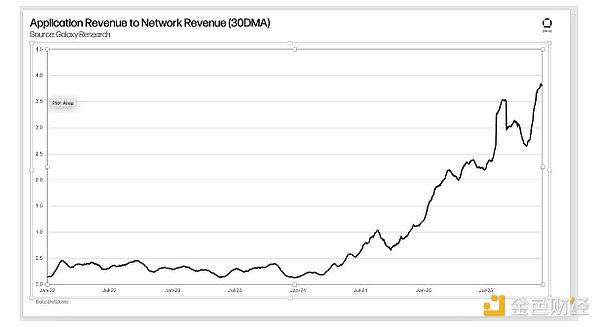I have seen too many people dive headfirst into the crypto market, dreaming of getting rich overnight, only to be "educated" by the market black and blue. Actually, trading crypto is not that complicated or mysterious. The key is to find a simple, executable strategy, avoid common pitfalls, and add a bit of patience and discipline. Today, I will condense the experience of these years into a "Four-Step Strategy + Three Don'ts + Six Mantras" to share with everyone. Whether you are a newbie or an old hand, this "Four-Three-Six" method can help you take fewer detours and seize more opportunities in the 2025 crypto market.
Four-Step Strategy: From Coin Selection to Exit, Every Step Has a Plan
The core of trading crypto is not predicting the future, but following the trend. My four-step operation method is simple and effective, especially suitable for ordinary players:
Step One: Coin Selection with "Signal Flares" Not all coins are worth touching. I like to use technical indicators for screening. For example, open the daily chart and look at MACD - when the fast line (MACD line) crosses above the slow line (signal line) forming a golden cross, it is a potential buy signal. If this golden cross occurs above the 0-axis, the success rate is higher, meaning the trend has turned strong. For instance, Solana (SOL) appeared a golden cross above the 0-axis at a certain low point in 2024, and subsequently rose 50%. This is not luck, but a clear market indication. Newbies, don't be afraid of the trouble; spend a few minutes learning indicators, which is much more reliable than blind guessing.
Step Two: Moving Average as a "Safety Belt" After selecting a coin, I only focus on one line - the 20-day moving average (you can adjust according to your habit, such as 30-day). The rule is dead simple:
- If the coin price is above the moving average, hold it confidently; don't move if the trend hasn't turned bad;
- If the coin price breaks below the moving average, immediately clear the position, don't fantasize about "waiting a bit longer". This line is like a safety belt when driving, used for survival. I remember once trading an altcoin, and even though it broke below the moving average, I was reluctant to sell, resulting in a 30% loss in a week. Since then, I never go against the moving average.
Step Three: Position Management with "Batch Dance" Position management is the lifeline of crypto trading. My habit is "step-by-step entry, batch selling":
- Entry: After the coin price breaks through the moving average, if the trading volume expands and stabilizes, you can add 20%-30% to the position. Don't go all in, leave room.
- Selling: Sell 1/3 when it rises 40%, sell another 1/3 when it rises 80%, and clear the position when it breaks below the moving average. This way, you lock in profits and don't fear missing the pump. For example, when BTC rose from 80,000 to 100,000 in 2024, I made over 60% by selling in batches and wasn't trapped by the pullback.
Step Four: Stop Loss is the "Iron Rule" Don't argue with the market. If it breaks below the moving average and doesn't recover the next day, walk away immediately, no matter how much you've earned before. When the trend changes, admit it and don't expect to "break even". I've seen too many people hold positions until liquidation. Stop loss is not shameful; preserving capital is the only chance to turn things around.
Three Don'ts: Pit Avoidance Guide, the Simpler, the More Useful
People who lose money in crypto mostly fall into these three pits. I've summarized the "Three Don'ts" for every reader:
- Don't chase highs or sell lows The crypto sentiment is too emotional. When everyone is rushing to buy, it's often the high point; when everyone is panicking and selling, it might be an opportunity. My experience is: stay calm when prices surge rapidly, and observe indicators when prices drop sharply. For example, a MEME coin rose 200% last year, but I didn't chase it, and sure enough, it was halved in three days, with indicators already suggesting it was overheated.
- Don't put all eggs in one basket Don't throw all your money into one coin, no matter how "foolproof" it looks. I usually divide funds into 5 parts, investing each part in a different coin or strategy. In 2024, a friend went all-in on SHIB and lost 80% due to a black swan event. Diversified investment would have made him cry less.
- Don't go all in Always keep 20%-30% cash. The market offers new opportunities every day; being fully invested is like tying yourself down. Once, I kept cash and took advantage of BTC pulling back to 90,000, making a profit by buying at the low, and that flexible capital is my confidence.
Six Mantras: "Cheat Codes" for Short-Term Trading
Short-term crypto trading is fast-paced. I've summarized six mantras to help you make quick decisions:
- High-level sideways look for new highs, low-level sideways guard against new lows When the price consolidates for a long time, don't move if the direction is unclear. High-level sideways might be preparing for an upward move, while low-level sideways might be a prelude to a decline. Wait for a breakthrough before following.
- Stay still as a mountain during sideways 80% of losses come from random operations during sideways. Wait without a signal, don't get itchy hands. Once, I couldn't resist buying the dips during sideways and got trapped for two weeks, wasting time and money.
- Enter on green candles, exit on red candles Consider buying when the daily candle is red (market is calm), and selling when the daily candle is green (sentiment is high). Often, moving against short-term sentiment is more stable.
- Slow decline, weak rebound; rapid decline, strong rebound The speed of decline can reveal the rebound's strength. Slow decline suggests weak buying power, and the rebound is likely weak; rapid decline might be a panic-selling pit that can easily V-reverse.
- Buy in batches, steady as a dog Don't go all in at once. For example, first buy 10%, add 10% when it rises 5%, and add another 10% when it drops 5%. This averages the cost and stabilizes psychology.
- Rest after excessive rise or fall After continuous large rises or falls, the market will take a breather and enter a sideways phase. Don't chase at highs or buy the dips hastily; wait until the sideways period ends before making a move.
A Real Case: My 2024 Comeback
Last August, I used this method to trade Polygon (MATIC). When the MACD golden cross signal appeared and the price was above the 20-day moving average, I bought in batches with 5,000 yuan. I sold 1/3 when it rose 40%, another 1/3 at 80%, and cleared the position when it broke below the moving average, netting over 7,000 yuan. Although it's not big money, my mindset was stable throughout. This is the power of a simple strategy - not seeking instant wealth, just steady wins.
Written at the End: Crypto Trading is a Marathon, Not a 100-Meter Sprint
The crypto world is not short of get-rich-quick stories, but those who survive long-term always prioritize "stability". My "Four-Three-Six" method is not complicated, with three core points:
- Rules above all: Don't be hijacked by emotions, follow the strategy;
- Small steps, fast run: Accumulate gradually, compound interest is the king;
- Keep an escape route: Both funds and mindset need room to maneuver.
The 2025 crypto market will have many opportunities, but also risks due to trade wars and political turmoil. If you have your own little trick? Welcome to share in the comments, let's learn and improve together! In this circle, those who can survive and make money are the true players.






